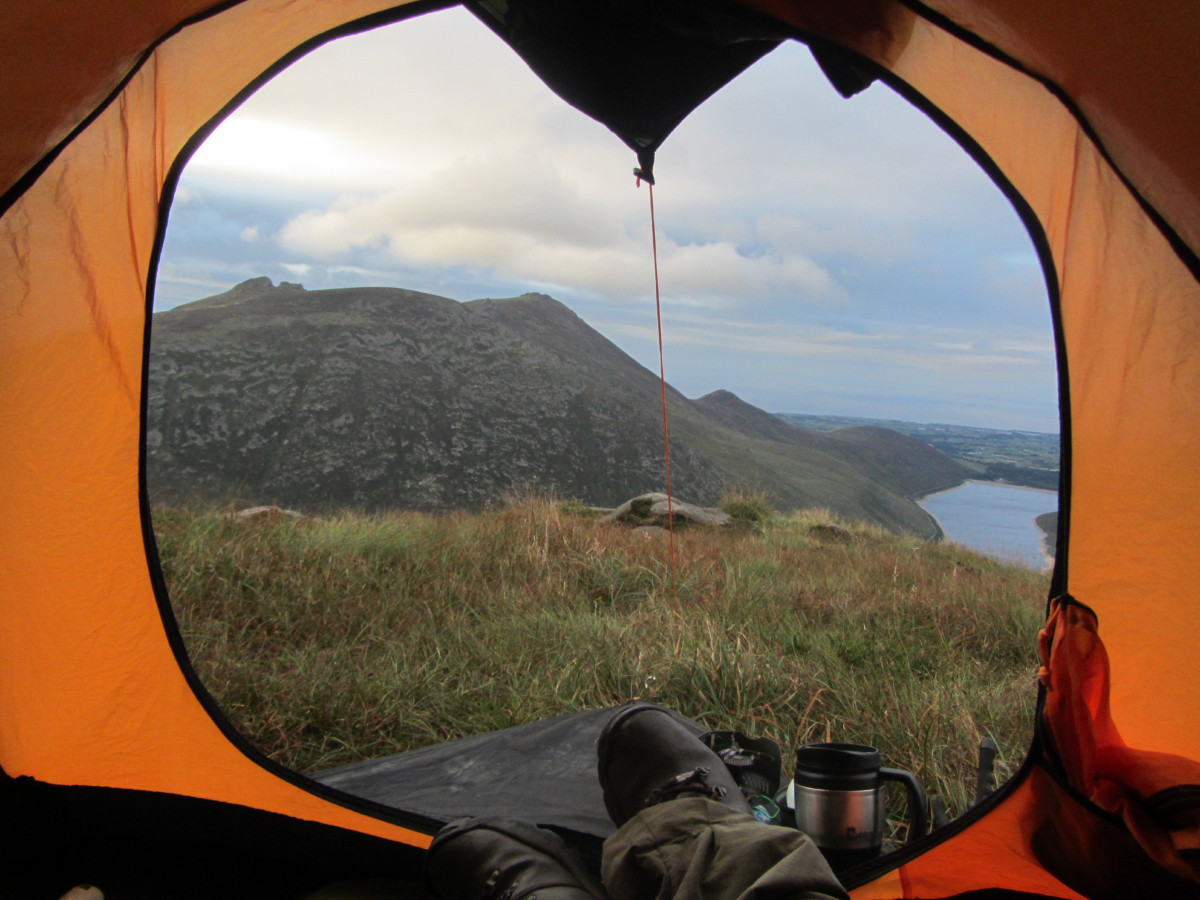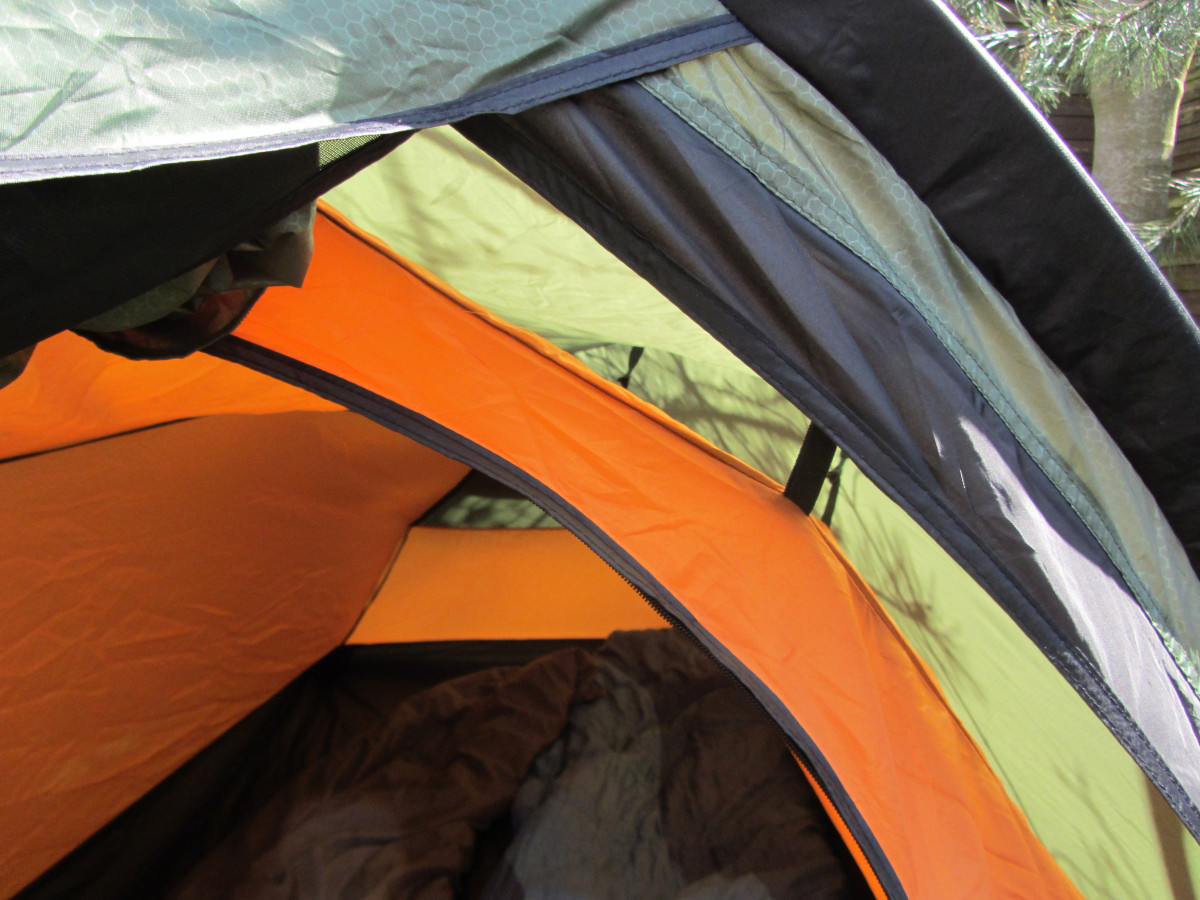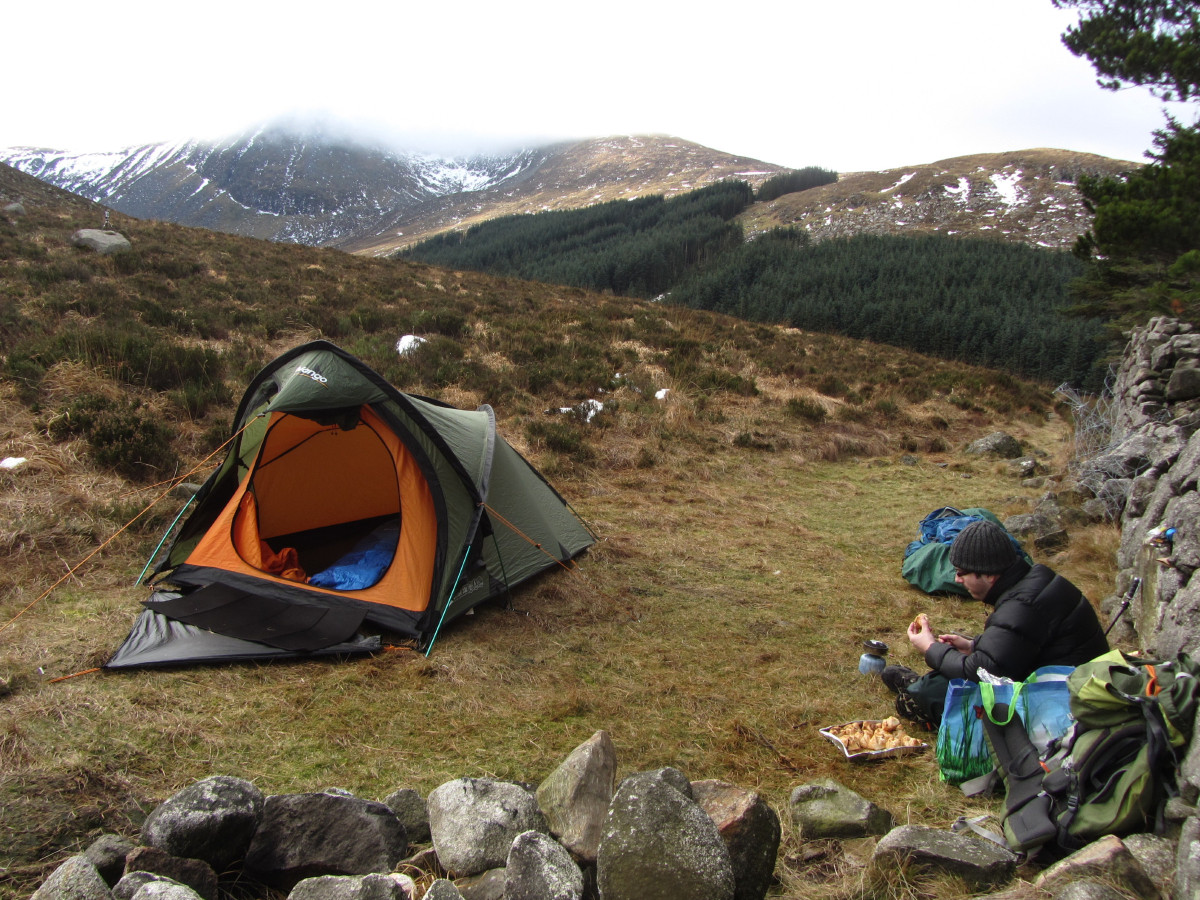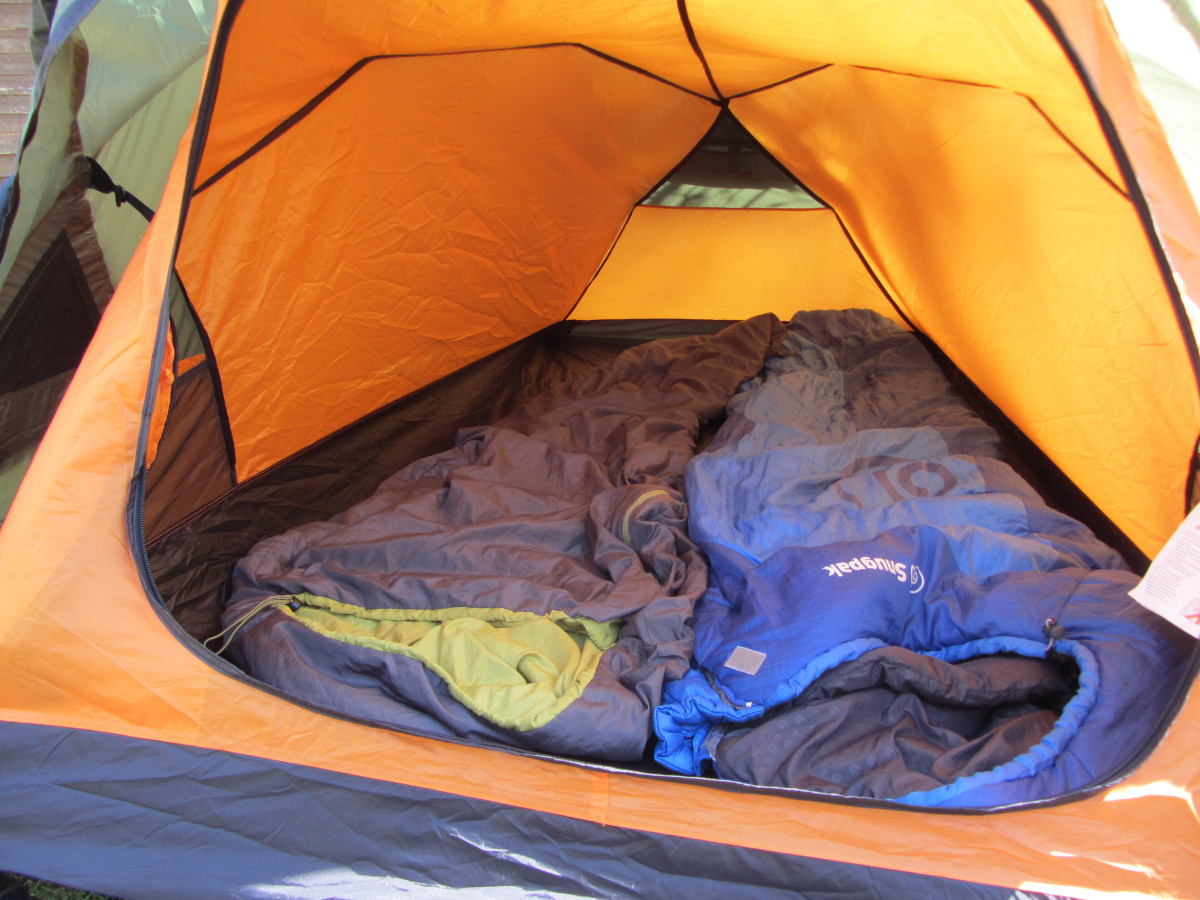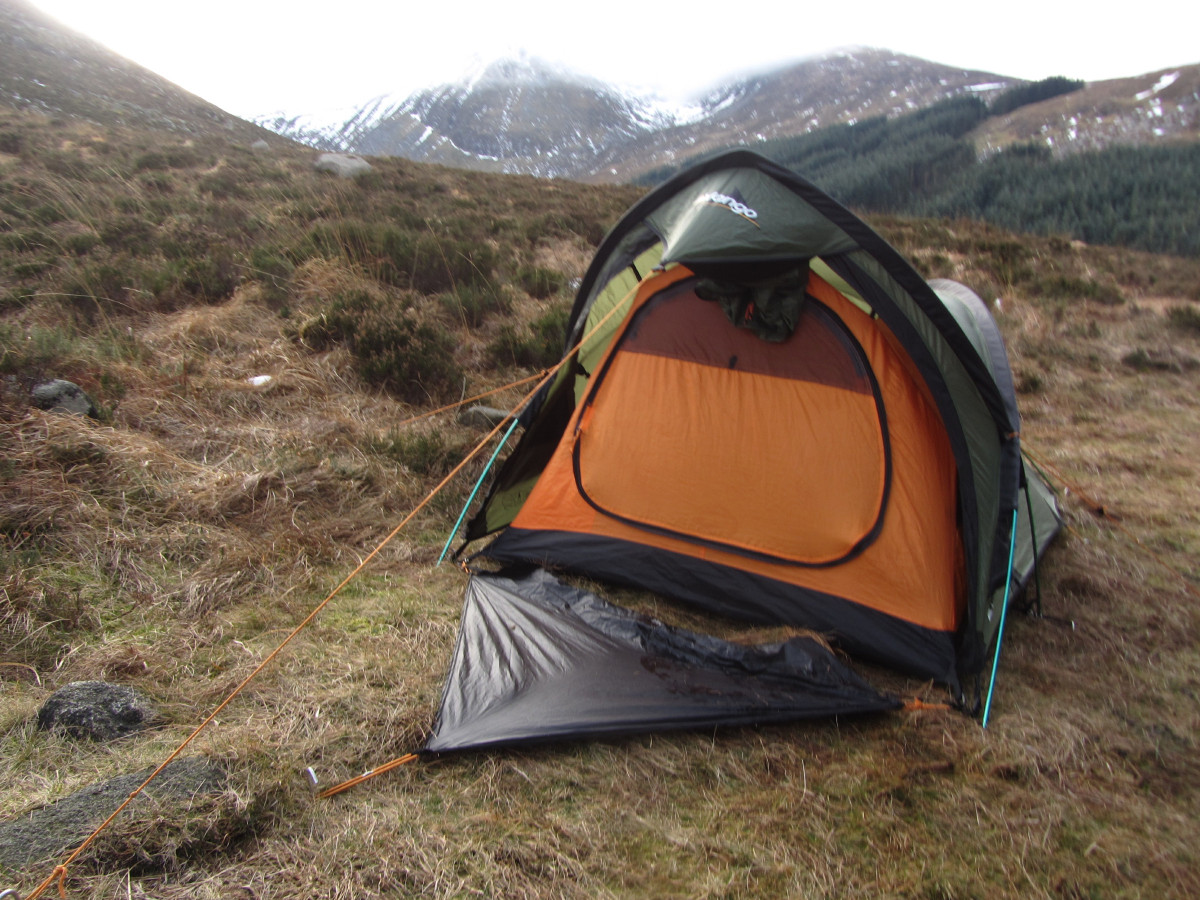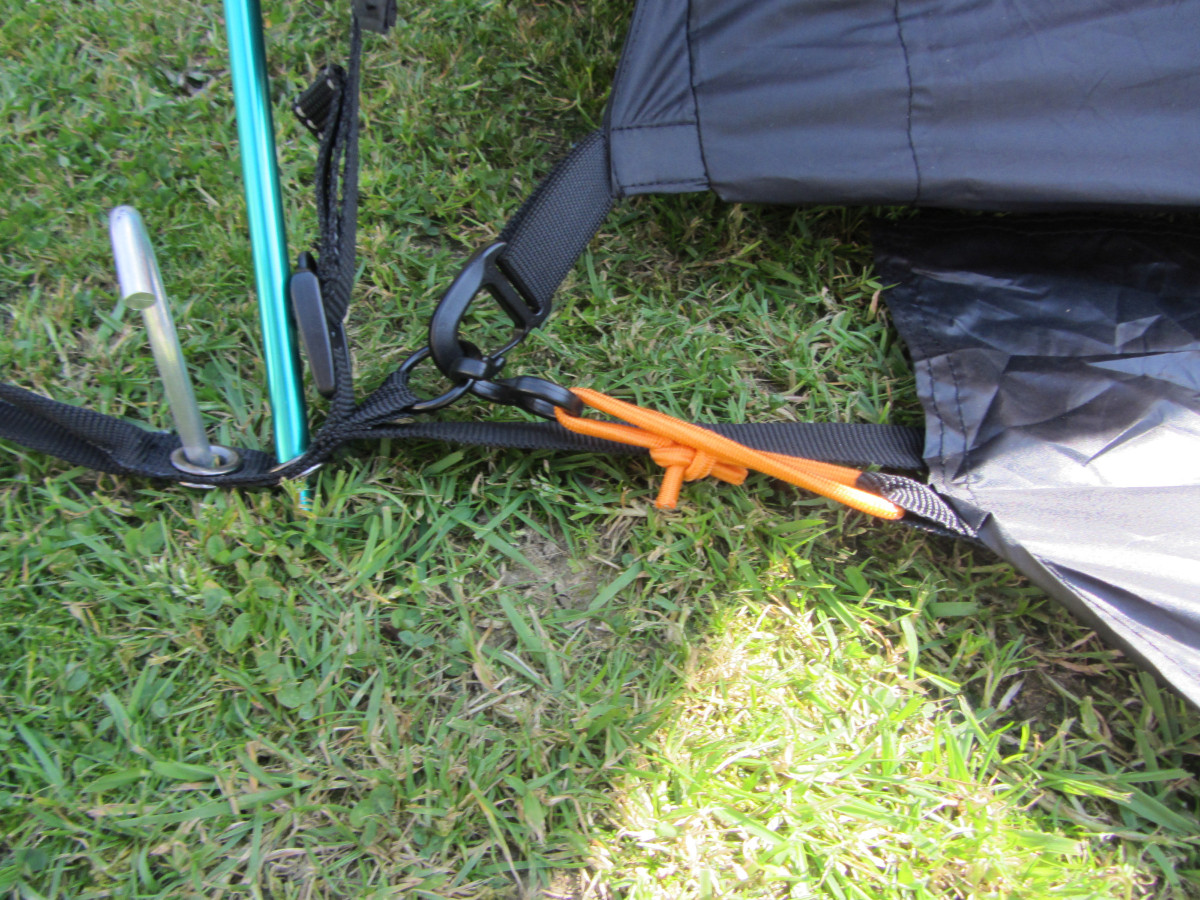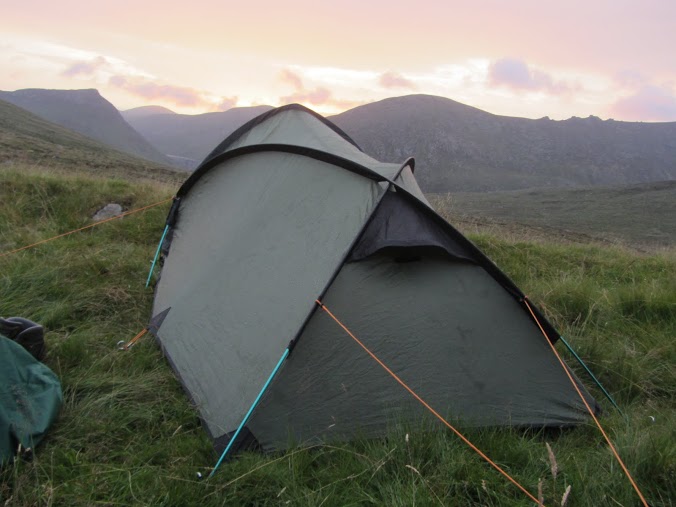With around twenty wild camps using the Vango Mirage I thought I would share with you a more In depth review of this two man tent from Vango.
Just under a year ago I purchased the Vango Mirage 200 as I felt somewhat cramped using my Wild Country Zephyros 2. After some careful consideration I went with the Mirage 200 as I felt it would allow me the space to keep all my necessary kit within the tent.
Since purchasing the Mirage I’ve wild camped in valleys, summits, forest and woodland trails and carried it on multi-day treks, in fact it’s the only tent I’ve used since.
When deciding which tent to purchase, one of my main needs was that I wanted a tent I could use on all terrains. It’s worth mentioning the Mirage can be erected free standing i.e. without needing pegs or by securing guylines around stones as below. The fact that the Mirage is freestanding with the poles inserted has in the past allowed me to pitch the tent in shelter before moving it to somewhere nearby. This has also proven useful when moving to more suitable ground, such as after the discovery of an uncomfortable slope.
Weight
When searching for my next pruchase I had a requirement that the tent must be under 3 kilograms; at 2.9 kilograms the mirage only just meets the requirement.
As far as I’m concerned the comfort and space I receive is worth carrying the extra weight, however ultralight enthusiasts may not be as impressed. While the Mirage 200 is designed to comfortably accommodate two men, I feel it would be a snug fit with limited space available in the porch for two sets of kit.
The Mirage 200 boasts a generous tent door, which can be stuffed into a side pocket within the tent if the door is opened. This is a brilliant feature if the weather is pleasant and you would like to let the breeze blow through your tent.. At 110 centimeters tall, the porch is easy to get in and out of and I have found no need to do any unnecessary stooping.
The semi geodesic shape was a must for me as I required a tent that could withstand strong winds and gales. The semi geodesic design of this tent has been able to withstand high winds by smoothly directing the wind over the ridge of the tent. During a recent multi-day wild camp we were met with gale force weather conditions and the Mirage stood strong throughout.Feature Overview
As I previously mentioned the Mirage weighs in at 2.90 kilograms which is a little heavy for a tent in this range. The Mirage comes with a stuff sack and repair kit but I only used the stuff sack once after finding it nearly impossible to pack away.
I now use my own stuff sack to store my tent, which I can use to pack away the tent in a matter of seconds, which is very handy if the rain starts and you’re trying to pack away in a hurry.
Sadly I’ve found myself dumbfounded as to why Vango have supplied such weak, flimsy pegs with such a good tent. I have replaced all the pegs after my first camping trip left me with two broken pegs. I suspect this could be in an effort to bring the total weight under the 3 kilogram mark.Pitching
The Vango Mirage pitches all-in-one with the outer waterproof flysheet connected by a series of toggles to the inner flysheet; this in turn creates enough space to allow air flow throughout the tent and keep any wet outer material from touching the inner tent.
I have found an real life pitching time be be around 10 minutes, or sometimes less if assisted by a friend. The Mirage has three poles, two which cross over in the centre, fitted via a sleeve and slip into receiving eyelets. The poles are powerlite branded and are marked as 7001-t6 alloys.
To date I’ve had no issue with any of the poles which appear strong yet light and well made. The third pole forms the arched front to the tent and this is via a sleeve and receiving eyelet, which braces the shape to form tension. I found the Mirage’s porch unsuitable for cooking but room enough to store a rucksack and pair of hiking boots.
The porch area does come with a ground sheet, which connects easily to the tent edges and pegs out at the front. Directly above the porch is a hooded canopy that serves to store the outer porch zipped doors, which can be opened fully, or either side.Airflow and ventilation is by the front and rear mesh windows located within the inner tent. It’s worth noting that the back mesh panel opens to a movable tabbed outer mesh window, which can be adjusted with a Velcro tab to allow for more or less ventilation.
Materials
The main materials that make up the tent are as follows:
- The flysheet material is constructed of protex 5000HH HC polyester.
- The groundsheet is made of 68D polyester.
- The inner tent is made from 6000MM polyester inner and mesh panels.
- The Vango Mirage is constructed using fire-retarded material although I would strongly recommend not cooking in any tent.
Guylines
There are five guylines on the Mirage – One over the porch which the outer zipped doors can be attached to, one to each side and two to the rear. The guylines are bright orange with line-lok runners.
One improvement I would make is to use reflective guylines, which would be visible under torchlight.
Dimensions
| Inner Tent | Outer Tent | Height |
|---|---|---|
| Length 225cm | Length 320cm | 110cm at front (porch) |
| Width 120cm | Width 140cm | 100cm at rear |
Pros and Cons
| Pros | Cons |
|---|---|
| Easy Pitching | Weak pegs |
| Good build quality | Needs more reflective markings |
| Spacious | |
| Semi-Geodesic / free standing structure |
2016 Update Summary
Ed has used the 2016 version of the tent since its release. The following summarises the differences between the above and the new 2016 version:
The changes made in the 2016 edition of the Vango Mirage 200 have been minor refinements.
The geodesic shape of the tent, the number of poles, pegs, and guy lines remain unchanged.
The fabric has not changed in a technical sense, although now has an embossed hexagonal pattern, which is purely aesthetic in nature. The pole sleeves are now slate grey rather than black – another cosmetic change.
The cramped stuff sack has been replaced with a new rapid stuff sack which opens wide at the top, allowing the tent to be stuffed much more quickly.
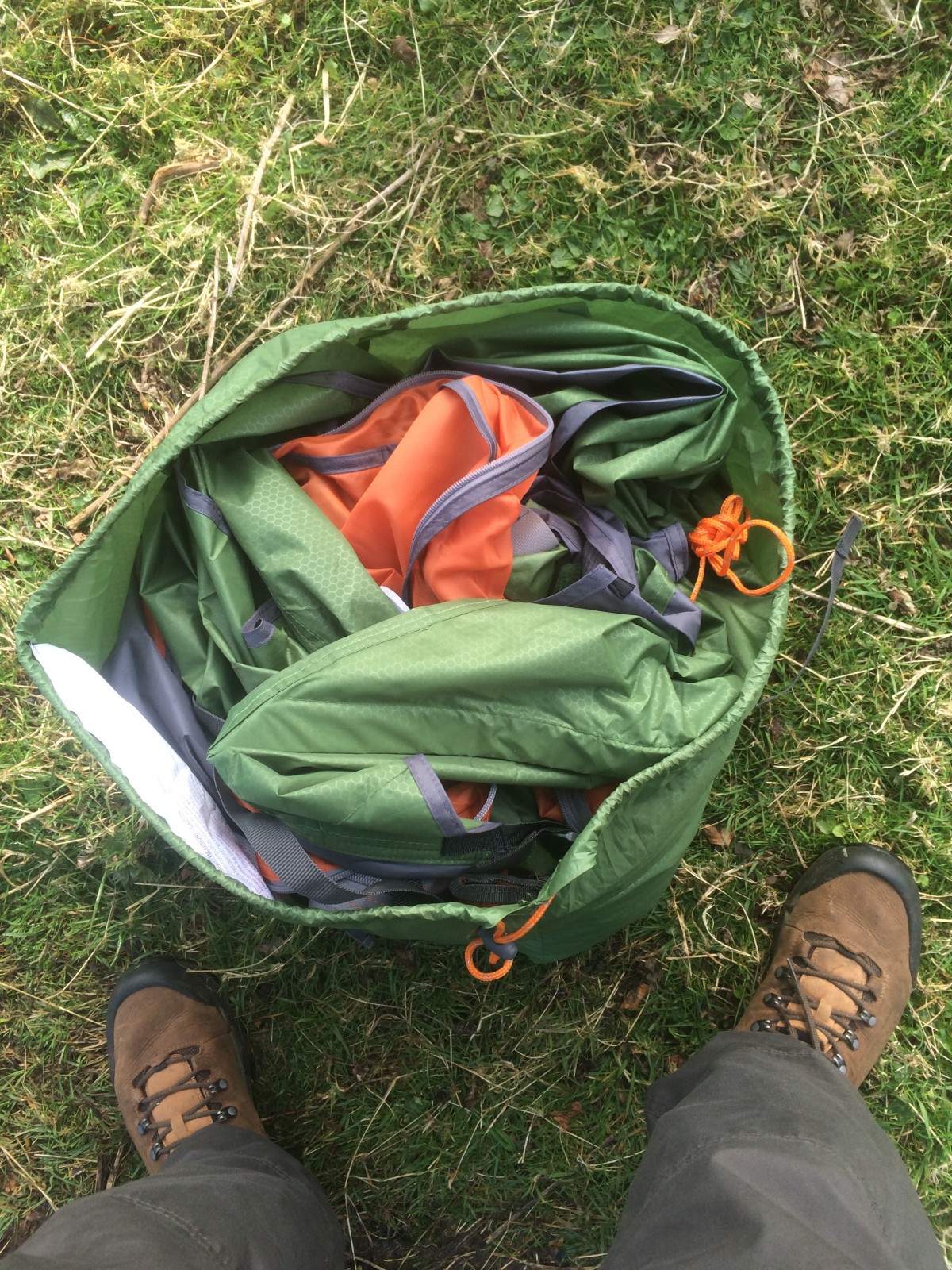
New rapid stuff sack
The door has been changed. The 2016 version no longer has the stuff pouch at the top to stow the door, instead opting for toggles to ‘roll and stow’ the door. The guy which was attached to the outer of this pouch is now attached to a small tab above the main door.
The door previously pegged down at the middle only, whereas there are now two widely spaced pegging loops. This gives more height in the porch at the sides and generally keeps the porch fabric more taut.
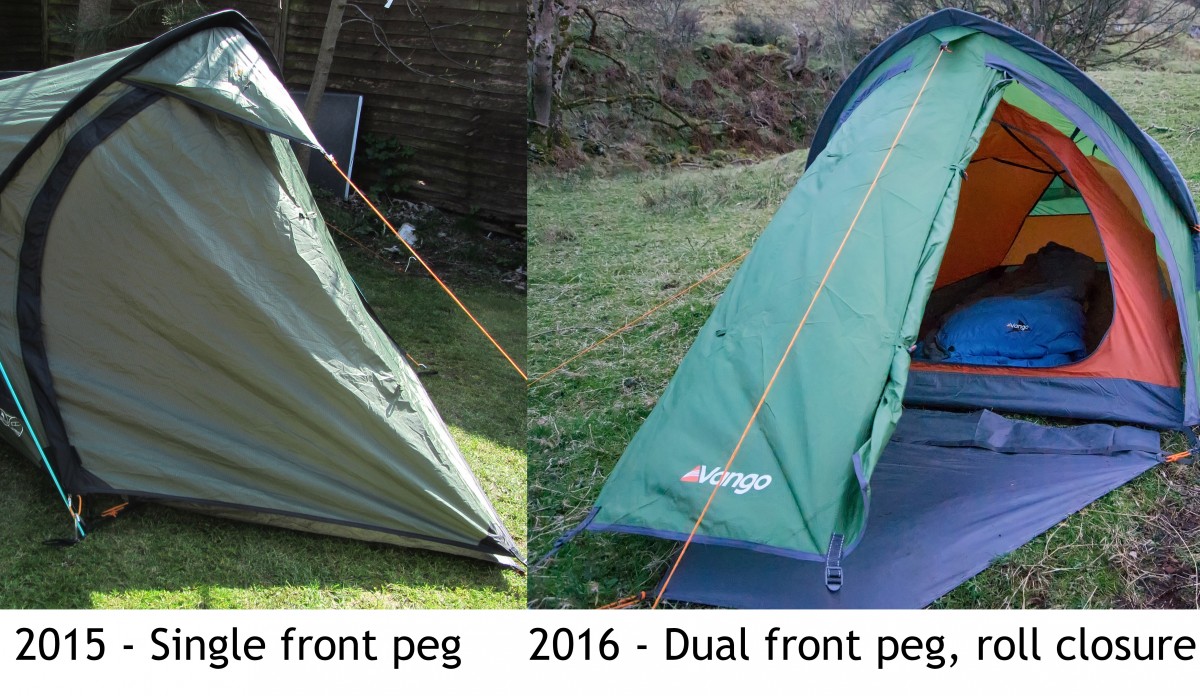
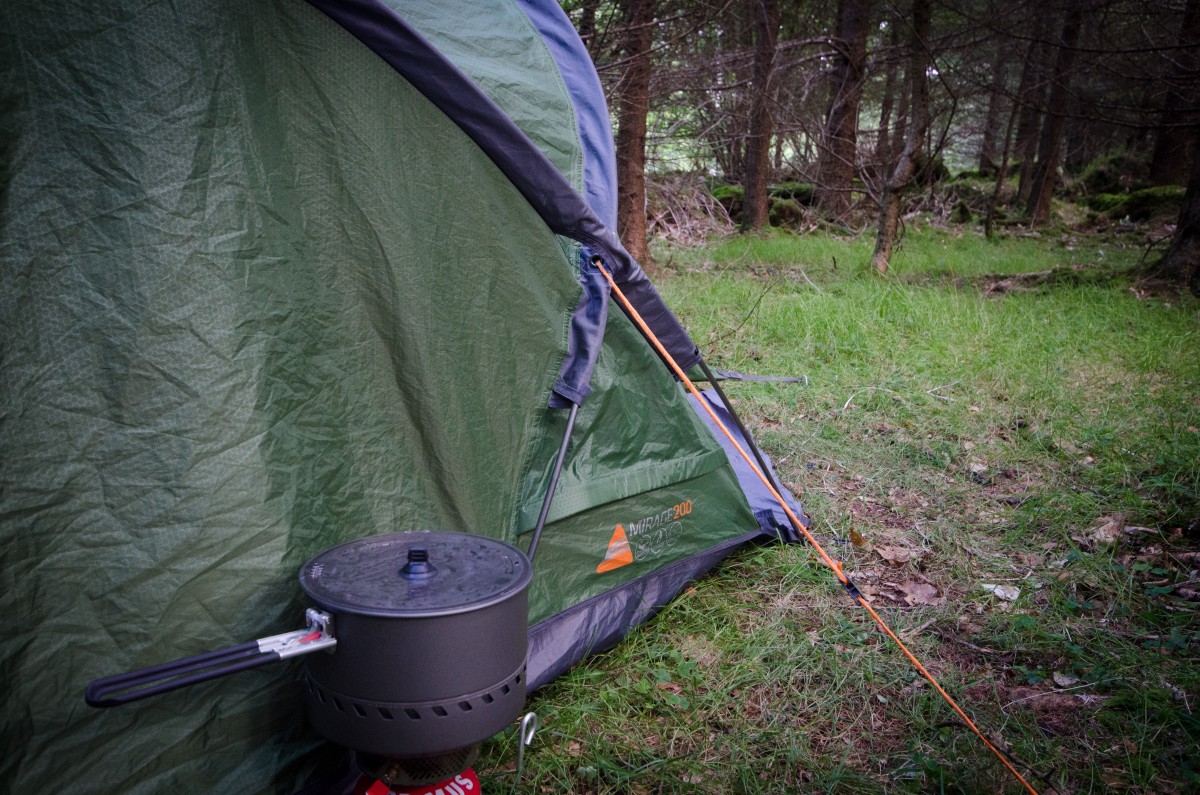
A look at the embossed flysheet pattern
Both versions of this tent make for a stable, spacious and easily pitched shelter. The main deciding factor between the 2015 and 2016 versions are whether you prefer a stuff pouch for your door or a porch which is taller at the sides.
Purchase Links
Both the 2016 and 2015 editions of this tent are frequently available used and new on eBay.

